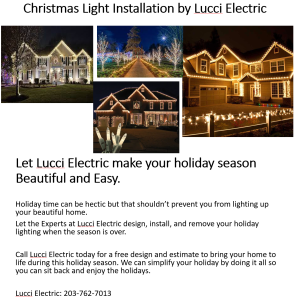
SAVING ELECTRICITY TIPS
The biggest electricity users in the home are heating and/or air conditioning, water heating, washing machines, tumble dryers, dishwashers, lighting, and the refrigerator. When looking to save electricity, focus on these big energy users and follow these tips:
- Turn off your television and other entertainment devices when they are not being
used. - Do not leave your television etc. in standby mode. Devices can use up to 90% as
much power in standby mode as when they are on. - Replace all of your inefficient incandescent light bulbs with energy efficient LED bulbs.
Replace halogen spotlights with much more efficient and longer lasting LED
Spotlights. - Ideally use a spin dryer before using the tumble dryer.
- Cook many items at the same time when your electric oven is hot.
- Use a microwave to reheat food or to cook small portions.
- Turn down your heating system thermostat. For every degree you lower your heat
between 60° and 70° F you can reduce your heating bill by up to 5%. - Purchase energy efficient white goods (washing machines, tumble driers,
refrigerators). These machines can cost a bit more but the electricity savings can
offset that over time. - Vacuum clean the condenser coils at the back or underneath your fridge freezer.
Accumulated dust reduces efficiency by up to 25% adding that cost to your electricity
bill. - Keep your refridgerator full, but not so full that air cannot circulate properly.
- Fold clothes straight out of the tumble drier while they are still warm to save on
ironing. - Cool cooked food before you put it into the refridgerator.
- Do not put uncovered liquids into the fridge. Their evaporation will make the fridge
have to work harder. - Use a convection oven. A small fan inside circulates hot air throughout the oven
cutting cooking times by up to 30%. - Don’t preheat the oven for roasting.
- Don’t keep opening the oven door. Every time you do so, your oven loses heat.
- Put lamps in the corner of a room so that the light is reflected off two walls.
- Turn down the temperature on your washing machine. Heating the water uses the
majority of the electricity. - Defrost frozen food in the refridgerator since this helps to cool the refridgerator.
- Running a full load in an efficient dishwasher will use less hot water than washing up
by hand in the sink! Save money, save time, and save electricity. - In the summer use ceiling fans on a fast setting instead of air conditioning to keep
cool. In the winter, reverse the direction of the fan so that the accumulated warm air is
blown up against the ceiling and bounces around the walls and into the living space.

EDUCATION – The Evolution of the Lightbulb
Thomas Edison is often credited with the invention of the light bulb. It actually took the work of many scientists to create it.
In 1809, Humphrey Davy used a high powered battery to create a electrical current between two charcoal strips, causing an intense light and the first arc lamp.
In 1820, Warren La Rue was the first to attempt making an incandescent light bulb.
(Incandescent means “emitting light as a result of being heated”.)
Thomas Edison was the first to create a lightbulb that was durable and could last for a long time.
In 1906-10, William Coolidge and the General Electric Company made the first tungsten filament incandescent light bulb, which is pretty close to the light bulb we use today.
Today much energy has been spent trying to find more environmentally friendly, energy-saving ways to create light.
A CFL compact fluorescent lamp) is an energy saving light bulb. CFLs use less power and have a longer life than incandescent light bulbs. They’re more expensive, but they last longer so fewer need to be purchased.
LEDs (or Light Emitting Diodes) are just small light bulbs bunched together, but unlike incandescent bulbs, they don’t have the small piece of fiber “that will burn out, and they don’t get especially hot.” They produce light by the movement of atoms in a silicon material that is sensitive to electricity. There are many benefits to LED lights. The initial cost of an LED is more expensive than other light sources, but because of their efficiency, you end up saving money on your energy costs in the long run. It’s a good idea to recycle them.
How can LED’s benefit you and your home? Click Here to Learn
How a Wireless Lighting System can Simplify Your Life.
TECHNOLOGY
CUTTING EDGE TECHNOLOGY
Did you know that you can simplify your home management with the flick of a switch?


